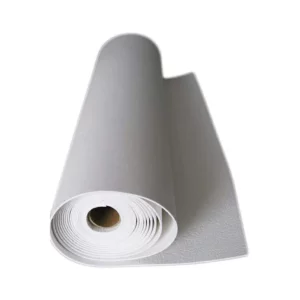The price of ceramic fiber paper can vary depending on factors such as thickness, density, dimensions, and manufacturer. Generally, ceramic fiber paper tends to be more expensive compared to traditional insulation materials like fiberglass or mineral wool. However, it is often more cost-effective than other high-temperature insulation materials such as ceramic fiber blanket or board.
Here are some key points to consider when comparing the price of ceramic fiber paper to other insulation materials:
- Initial Cost: Ceramic fiber paper typically has a higher initial cost compared to traditional insulation materials like fiberglass or mineral wool. However, its superior thermal performance and other properties may justify the higher upfront investment.
- Performance: Ceramic fiber paper offers excellent thermal insulation properties, high-temperature resistance, low thermal conductivity, and lightweight characteristics. While traditional insulation materials may have lower initial costs, they may not provide the same level of performance in high-temperature applications.
- Long-Term Savings: Despite the higher initial cost, ceramic fiber paper can offer long-term savings due to its durability and thermal efficiency. Its ability to withstand high temperatures and resist thermal shock can result in reduced maintenance and replacement costs over time.
- Application Specificity: The choice of insulation material often depends on the specific requirements of the application. ceramic fiber paper While ceramic fiber paper may be more expensive than traditional insulation materials, it may be the most suitable option for high-temperature environments or applications requiring superior thermal performance.
- Energy Efficiency: Ceramic fiber paper can contribute to energy savings by reducing heat loss and improving overall energy efficiency in industrial processes, furnaces, kilns, and other high-temperature equipment. The potential energy savings associated with using ceramic fiber paper should be considered when evaluating its overall cost-effectiveness.
- Regulatory Compliance: Depending on the industry and application, certain insulation materials may be required to meet specific regulatory standards or safety requirements. Ceramic fiber paper is often preferred in applications where fire resistance, chemical inertness, and low smoke emissions are essential for compliance with regulations.
In summary, while ceramic fiber paper may have a higher initial cost compared to traditional insulation materials, its superior thermal performance, durability, and suitability for high-temperature applications can make it a cost-effective choice in the long run. When evaluating insulation options, it’s essential to consider factors such as performance, application requirements, energy efficiency, and regulatory compliance in addition to initial cost.
